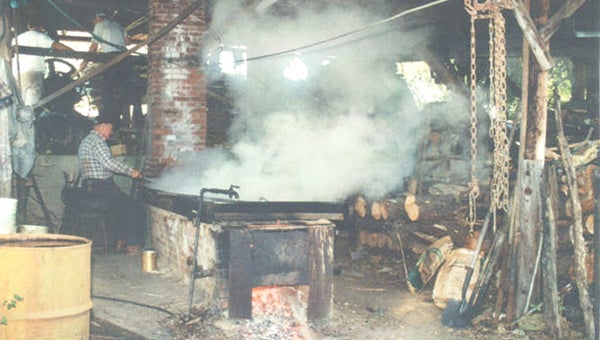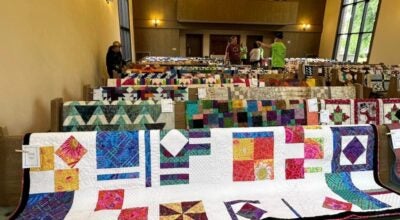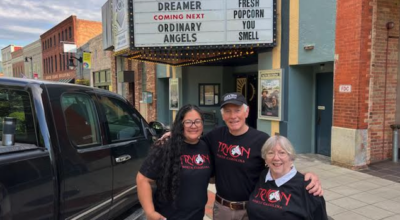Making molasses in Polk County
Published 9:17 am Thursday, September 8, 2011
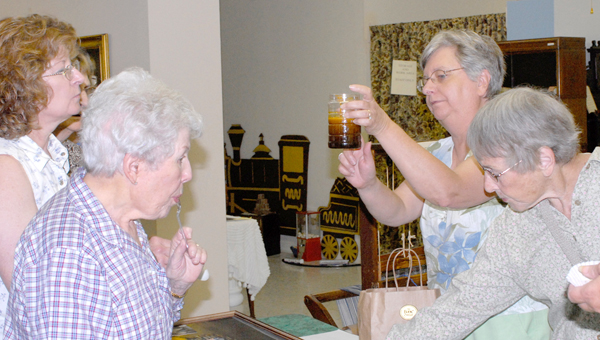
Some of those who attended the Sept. 6 Polk County Historical Association presentation on molasses making in Polk County get a taste of the product. (photo by Leah Justice)
At one time in Polk County, there probably weren’t many households that weren’t stocked with jars of molasses. Most families either made it or helped another family make it in exchange for a few jars.
The Polk County Historical Association met Tuesday, Sept. 6 and reviewed the process and history of making molasses and sorghum in Polk County.
The panel of speakers included Mabel Searcy Carlyle, Ray Hudson and Lewis Williams, all of whom grew cane and/or made molasses and sorghum.
Hudson recently interviewed Lloyd Haynes, whose father, General Haynes, was once known as the “guru” of molasses making in Polk County. General Haynes would bring everything needed to make molasses to certain families who grew cane and cooked it on their property.
Hudson said his family grew cane every year and would plant by the new moon in June and harvest in the fall. He said some secrets to the planting were that not much fertilizer was needed and they never planted it thick.
Carlyle said you don’t want rich soil to grow cane. Cane grows better in poor soil, she said, which is the reason it grows so well in Polk County.
Williams also said his daddy always planted the cane in narrow rows, and every family had its favorite variety of cane. He said some of his first memories were of thinning the cane.
The process of making molasses and sorghum is tedious, which is probably why homemade molasses is now hard to find, panel members said.
The cane is thinned and cut, then pressed, cooked and filtered through different stages. Horses or mules were used years ago to turn the press. Williams said the preparation included everything from taking the wheels off the wagon to soak them in the creek, putting new shoes on the horses or mules and collecting firewood to cook the molasses.
“It was a long day’s work,” Williams said. “We were up before daylight grinding and made it into the night.”
Williams said the children would go into the woods to find pine knots to build a fire over the pan so they could see at night.
Carlyle said wood for the cooking fire had to be collected a year ahead of time because the fire had to be really hot.
“There was a lot of work up front to get ready,” said Carlyle.
Speakers also talked about how difficult and painful it was to harvest the cane because of a stinging insect called a pack saddle, which lived on the cane.
Historical association president Anna Conner, who moderated the event, said she was astonished at the amount of work making molasses takes. She said she remembers children being out of school for weeks during harvest time.
“What an art this had to be,” said Conner. “You had to make sure it was ready to be pressed, had to filter it and had to make sure the heat was right to cook.”
“Skimmings” are taken off the top of the liquid during the cooking process, and most of the speakers said they dumped the skimmings into a hole dug behind the cooker, called a skimming hole. Cows and pigs ate some of the skimmings, but Carlyle said most of the skimmings “went in the hole,” because giving the animals too much sugar made them sick.
Williams and Carlyle talked about the importance of molasses during WWII, when sugar was rationed and molasses was an alternate sweetener. Carlyle said she was raised with eight children, and her family kept molasses to eat as well as sold some of it.
“We knew if it were a birthday, we’d be having gingerbread cake (made with molasses),” Carlyle said.
Hudson, however, said his Daddy always told him molasses was too expensive to keep and eat.
Conner said the art of making molasses took the whole family, friends and the neighbors pitching in to accomplish. Carlyle said making molasses was a social gathering as neighbors would come over at night to sit and talk.
“If you got the kind you all used to make now, you couldn’t afford it,” Conner said. “What you buy in the grocery store is not recognizable. It’s hard to find homemade molasses anymore.”
The historical association event ended with the audience tasting sorghum, brought by Carlyle, and shoofly pie, made by Conner’s sister using molasses.
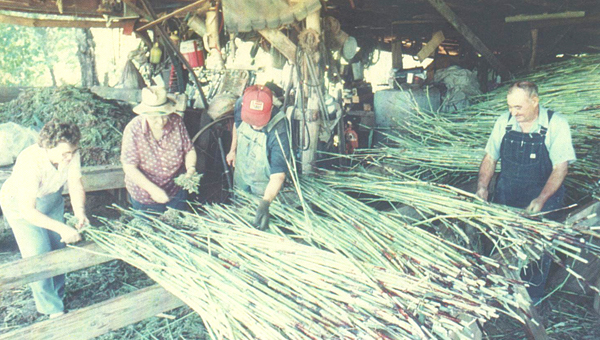
The Haynes family, which has made molasses in Polk County for at least five generations, processes the cane for a batch. General Haynes was referred to in the area as the “guru” of making molasses for many years. The family still makes molasses locally. (photos submitted by Floyd Haynes).


